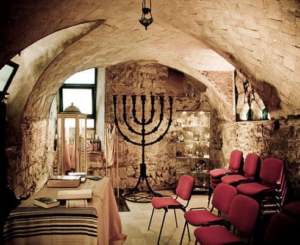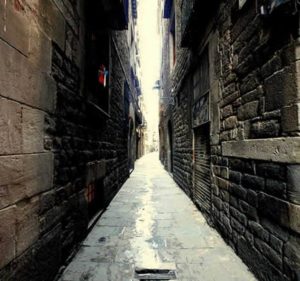The Jewish district is called “El Call” and is located in the middle of the Barri Gòtic. It starts at the northwestern corner of the Plaça Sant Jaume. The name “El Call” comes from the Hebrew word kahal, which means community or congregation. While Barcelona was never the largest Jewish center in Spain, it did play a large role in the history of Jews in Spain. Long before the expulsion of the Jews in 1492, Jewish culture flourished throughout the Iberian Peninsula.

In the center of this district is Spain’s oldest synagogue and one of the oldest ones in Europe. The synagogue is called Sinogoga Major de Barcelona. It has Roman foundations and is thought to have existed in some shape or form since the 5th century. During a research project on the Jewish history of Barcelona, the true origins of this then forgotten building were discovered. After the expulsion of the Jews, the building had many uses including a storeroom and 17th century apartments on top. The synagogue was restored and finally opened to the public in 2002. At the entrance a small door leads you down to the original street level of the Roman Foundations. Today regular services are not held in here, but special ceremonies do take place from time to time.

– Nina


1 comment. Leave new
[…] home to many of the most beautiful and most famous museums as well as the Jewish district (“El Call“) […]